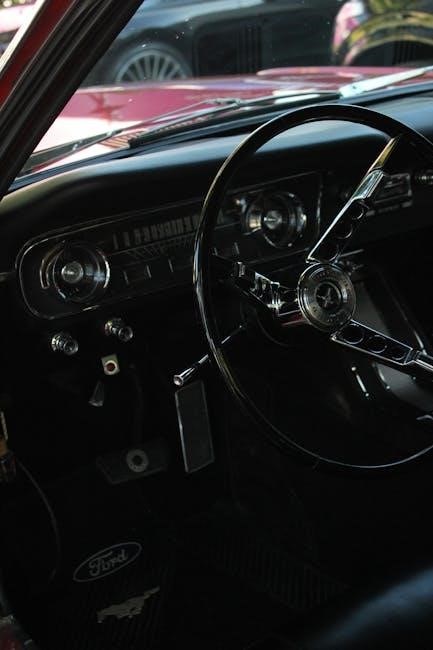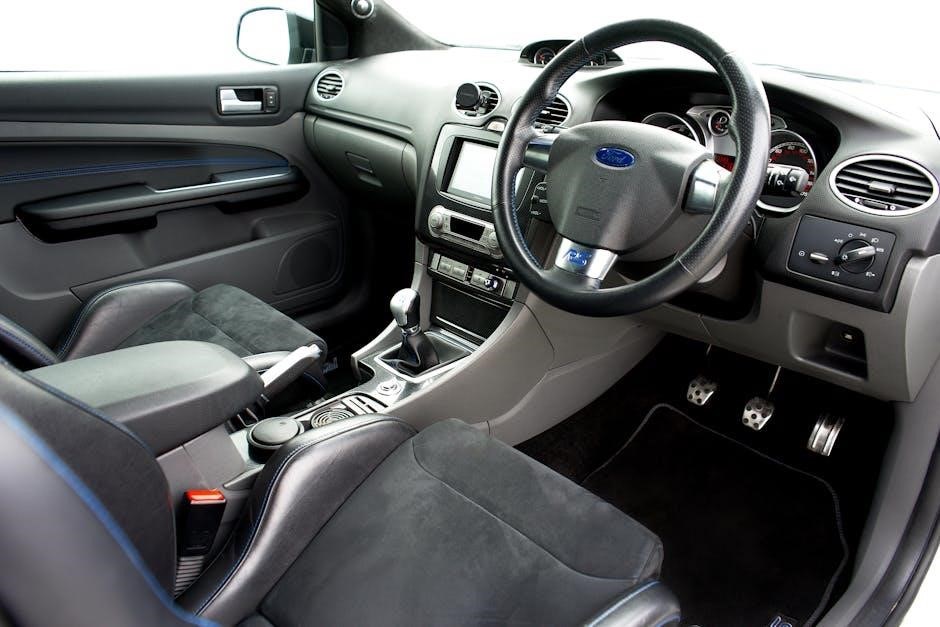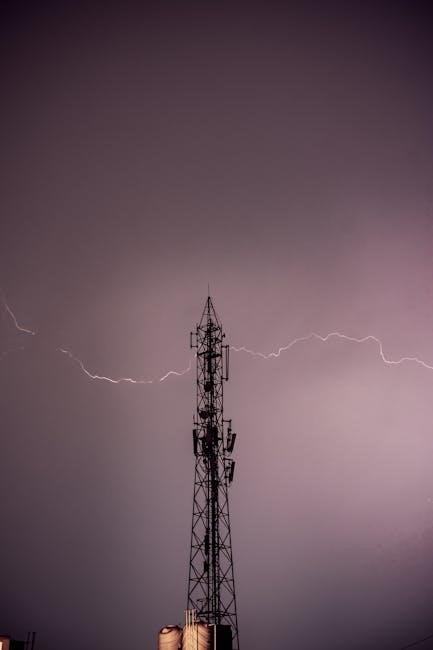Ford Lightning Manual Transmission Conversion: An Overview
The Ford Lightning, originally equipped with automatic transmissions, has seen a surge in manual transmission conversions․ These swaps, while not factory standard, offer enthusiasts enhanced control and a more engaging driving experience․ Skilled mechanics and resourceful owners are making this modification a reality․

Why Consider a Manual Transmission Swap?
Many Ford Lightning enthusiasts explore manual transmission swaps for a variety of compelling reasons․ Primarily, the desire for greater driver engagement fuels this modification․ A manual transmission offers a more direct connection to the vehicle, allowing drivers to precisely control gear selection and engine RPM, leading to a more visceral and involved driving experience․
Performance enhancement is another key motivator․ While the stock automatic transmission is robust, a well-chosen manual transmission can often handle increased power levels more effectively, especially in modified Lightnings․ The ability to “dump the clutch” and execute precise shifts can improve acceleration and overall performance on the street or track․
Durability concerns also play a role․ Some owners, facing potential failures of the original 4R100 automatic transmission, view a manual swap as a more reliable long-term solution․ Manual transmissions, with their simpler design, can be less prone to certain types of failures compared to complex automatics, particularly when subjected to high horsepower and demanding driving conditions․
Ultimately, the decision to undertake a manual transmission swap is a personal one, driven by a combination of performance aspirations, reliability concerns, and the desire for a more connected driving experience․

Identifying Compatible Manual Transmissions
Selecting the right manual transmission is crucial for a successful Ford Lightning conversion․ Several options exist, each with its own strengths and weaknesses․ Considerations include torque capacity, gear ratios, and physical dimensions to ensure proper fitment․
Tremec T-56 Magnum XL
The Tremec T-56 Magnum XL is a popular choice for manual transmission swaps in high-performance vehicles, including the Ford Lightning․ Known for its robust design and high torque capacity, this transmission can handle the Lightning’s powerful engine․ Its aftermarket support is extensive, providing a wide range of gear ratios and customization options․ The T-56 Magnum XL offers enhanced shifting precision and durability, improving the overall driving experience․
While not a direct bolt-in, the T-56 Magnum XL can be adapted to fit the Lightning with some modifications; This may involve custom fabrication of mounting brackets, modifying the driveshaft, and addressing the electronic interfaces․ Despite these challenges, the T-56 Magnum XL’s performance benefits make it a worthwhile option for enthusiasts seeking a manual conversion; Its strength and reliability ensure it can withstand the demands of a modified Lightning, offering a significant upgrade over the factory automatic transmission․
Parts Required for the Swap
A manual transmission swap on a Ford Lightning necessitates specific components․ These include the transmission itself, a clutch kit, flywheel, and a hydraulic clutch system․ Additional parts involve pedal assembly, and potentially a modified driveshaft for proper fitment․
Clutch and Brake Pedal Assembly
Installing a manual transmission in a Ford Lightning requires a clutch and brake pedal assembly․ This assembly is crucial for operating the new manual system․ Sourcing a compatible pedal set can be complex, often involving parts from other Ford trucks or aftermarket solutions․ The pedal assembly must fit within the Lightning’s cabin, ensuring proper ergonomics and functionality․
The clutch pedal needs to be correctly positioned for comfortable use, while the brake pedal should maintain its original feel and effectiveness․ Proper installation involves secure mounting to the firewall and connection to the clutch master cylinder․ Modifying or fabricating brackets may be necessary to achieve a seamless fit․
A donor pedal assembly from a manual transmission-equipped F-150 of a similar year is a common solution, but adjustments might still be needed; The assembly should allow for smooth clutch engagement and disengagement․ The brake pedal must also integrate without interfering with the clutch pedal’s movement․ Attention to detail during this stage is paramount for safe and enjoyable driving․
Clutch Master and Slave Cylinders
The clutch master and slave cylinders are vital components in a manual transmission conversion for a Ford Lightning․ These cylinders form the hydraulic system that actuates the clutch․ The master cylinder, mounted near the clutch pedal, converts pedal force into hydraulic pressure․ This pressure is then transmitted to the slave cylinder, which in turn moves the clutch fork and disengages the clutch․
Selecting compatible cylinders is essential for proper clutch function․ The master cylinder must match the pedal assembly and provide sufficient fluid displacement․ The slave cylinder needs to be compatible with the chosen transmission and clutch setup․ Often, parts from a donor vehicle with a similar manual transmission are used․
Proper installation involves securely mounting both cylinders and connecting them with hydraulic lines․ The system must be bled to remove air, ensuring consistent clutch engagement․ The correct sizing of the cylinders is crucial for optimal pedal feel and clutch performance․ Careful consideration and precise execution during this stage are key to a successful manual swap․
ECU Considerations and Control Packs
Integrating a manual transmission requires careful attention to the ECU․ Control packs, like those from Ford Performance, can simplify this process․ These packs manage engine functions and ensure compatibility, crucial for a successful conversion and optimal performance․
Ford Performance Control Pack
The Ford Performance Control Pack is a vital component for a successful manual transmission swap in a Ford Lightning․ Specifically designed to work with Ford engines, these packs offer a streamlined solution for managing the electronic complexities of the conversion․ These control packs are often modified by performance specialists like PBH to ensure seamless integration, especially with engines like the Gen 3 Coyote․
These control packs are pre-calibrated, which simplifies the installation process and minimizes the need for extensive custom tuning․ They typically include an ECU, wiring harness, and other necessary sensors, all designed to work together․ This integrated approach helps to manage engine functions and optimize performance, ensuring that the swapped manual transmission works in harmony with the engine’s capabilities․
Proper integration of the control pack is essential for maintaining drivability and reliability post-conversion․ Without it, the engine might not communicate correctly with the new transmission․ This will lead to poor performance or even damage to vital components․ So choosing a compatible and well-configured control pack is paramount for a successful manual swap․

Potential Performance Gains and Losses
Swapping to a manual transmission in a Ford Lightning can yield notable performance gains․ A manual offers greater control over gear selection, potentially improving acceleration and responsiveness․ Drivers can optimize engine RPMs for peak power, leading to quicker launches and enhanced overall driving dynamics․ This can be particularly advantageous in performance driving situations, such as track days or spirited street driving․
However, there are potential performance losses to consider․ Manual transmissions require more driver skill to operate efficiently; inexperienced drivers might experience slower acceleration times compared to an automatic․ Additionally, the weight of the new transmission and associated components could slightly increase the vehicle’s overall mass, which can affect handling and braking performance․
Furthermore, the torque capacity of the chosen manual transmission must be adequate to handle the Lightning’s powerful engine․ An improperly matched transmission could suffer from premature wear or even failure under the stress of the Lightning’s output․ Careful consideration and proper component selection are crucial to maximize gains and minimize potential losses;
Challenges and Considerations
Undertaking a manual transmission swap in a Ford Lightning presents numerous challenges․ One significant hurdle is the integration of the manual transmission with the Lightning’s existing electronic systems․ The ECU, originally designed for an automatic, requires recalibration or replacement to function correctly with a manual․
Another challenge lies in fabricating or sourcing the necessary mechanical components․ A custom driveshaft is usually required to connect the manual transmission to the rear axle․ The clutch and brake pedal assembly must be properly installed and aligned․
Cost is a major consideration․ Manual transmission swaps can be expensive, involving the purchase of a transmission, clutch, flywheel, hydraulic system, and other supporting components․ Professional installation can add significantly to the overall cost․
Long-term reliability is another concern․ Modified vehicles may experience issues not encountered in factory-built vehicles․ Wear and tear on custom components may lead to more frequent repairs․ Careful planning and high-quality parts are essential to mitigate these risks․

Alternative Options
For Ford Lightning enthusiasts seeking enhanced performance without the complexity of a full manual transmission swap, several alternative options exist․ One popular choice is upgrading the existing automatic transmission with performance-oriented components․ This includes installing a higher stall torque converter, stronger clutches, and a reprogrammed valve body․ These modifications can significantly improve shift speed and overall responsiveness, providing a sportier driving experience․
Another alternative is utilizing a transmission control module (TCM) that allows for greater customization of shift points and firmness․ Some aftermarket TCMs offer features like paddle shifters, giving the driver more control over gear selection․
Quick ratio gear sets, or even gear vendors attachments, can adjust the final drive ratio, improving acceleration and low-end torque․ These modifications are less invasive than a full transmission swap and can be a cost-effective way to enhance the Lightning’s performance․
These alternatives offer a balance of improved performance and reduced complexity, making them attractive options for Lightning owners seeking a more engaging driving experience․

